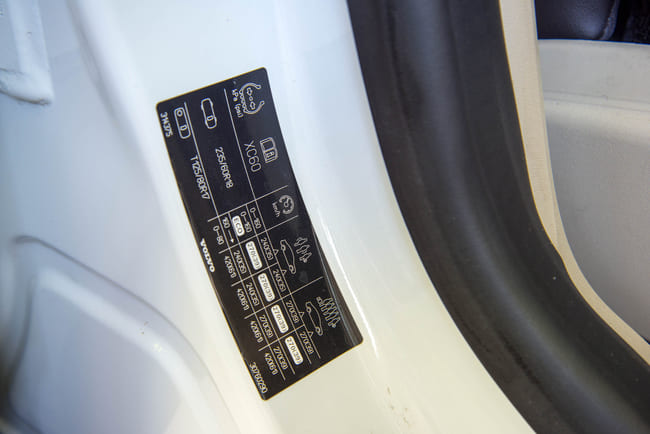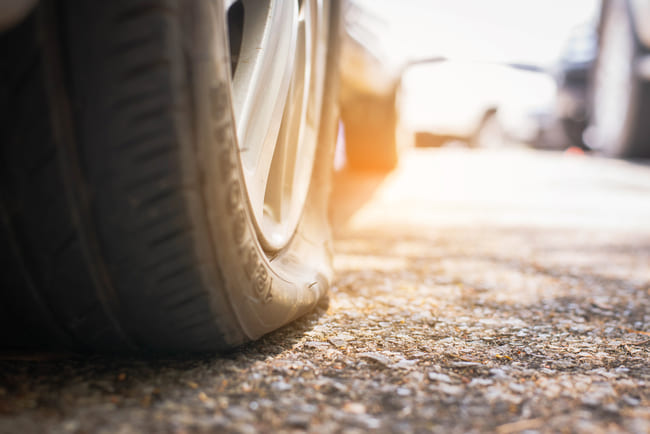
Proper tire pressure is important for a number of reasons. If this drops too far, not only does your fuel consumption increase sharply, but your car tires can also be damaged to a greater or lesser extent. In addition, too low tire pressure actually poses a risk to life and limb. For this reason, one of the most important skills of a driver is to check the tire pressure correctly. You should do this about every two weeks. It does not matter whether it is about the tire pressure of summer tires or winter tires in the car. Modern vehicles make this work easier, because in many cases they are equipped with tire pressure monitoring systems. In our article we explain what a tire pressure monitoring system is and how it works.
Contents
What happens if the car tire pressure is too high or too low?
On average, there are around 30 fatal accidents per year in the Federal Republic of The United Kingdom, which can be attributed to a lack of tires. In addition, around 2,000 people are injured. Even a deviation in the tire pressure of your car of just 0.5 bar can lead to a massive change in the driving characteristics of your car. This often leads to an increase in the vehicle braking distance, but also to a deterioration in the vehicle's cornering position. Incidentally, this applies equally to tire pressure that is too low or too high on your car.
If the tire pressure on your car is only 0.4 bar too low, you can assume increased rolling resistance. This parameter, in turn, has a direct impact on the fuel consumption of your car. You can therefore assume that you will then most likely consume 0.3-0.4 liters more per 100 km. If this is extrapolated to all vehicles that are driving in the European Union with incorrect tire pressure, the result is an imposing unnecessary fuel waste of 3,000,000,000 liters of fuel within one year. In other words, a value of 5,000,000,000 euros is burned annually. Other consequences if the tire pressure on your car is too high are accelerated and sometimes uneven tire wear and a reduction in your driving comfort. So, checking your tire pressure regularly is one way to extend the life of your tires.
What tire pressure does your car need?

In order to be able to check the correctness of your tire pressure at all, you first have to know or find out what tire pressure you need for your car. Of course, there are many relevant tables on this subject that you can use to determine the correct tire pressure for your fully loaded car. How much tire pressure your car needs depends on various factors. The first thing to mention is the type of tires. For example, winter tires sometimes require a different tire pressure than summer tires. In addition, the motorization has a significant influence on the corresponding target values. This is due in particular to the fact that different engines also lead to different vehicle weights or to a different distribution of the corresponding masses. Of course, this must also be reflected in the target values for the tire pressure of your car.
In general, the tires on an axle should always have the same tire pressure. Conversely, this also means that the pressures between the rear and front tires can sometimes differ significantly. In principle, the vehicle manufacturer determines how much tire pressure your car should have. Depending on the type of vehicle you drive, you will find the relevant information not only in the vehicle operating instructions, but also directly on your vehicle. The vehicle manufacturers often attach appropriate stickers to the vehicle. The most popular places include the inside of the gas cap, the glove compartment or the B-pillar of your vehicle. If you cannot find one of these stickers and you do not have your vehicle manual to hand, you can also consult the manufacturers' lists that can be found on the Internet.
Check the tire pressure in the Measure and increase or set the car correctly

After you have found out how high the pressure should actually be, it is now a matter of correctly measuring the tire pressure on your car. It should be noted that in Europe the tire pressure in the car is usually given in bar. This applies to the corresponding measuring devices as well as to the information in the manual and on the stickers. Although a tire pressure monitoring system has now become mandatory for many vehicles, most drivers only use it as a warning system. However, you should not wait until the low tire pressure symbol lights up in your car to take corrective action. In fact, most on-board computers are also able to display the car's tire pressure on a display.
What should you do if your tires fail?

If you have been driving for a long time with too little air in the tires, serious tire damage can easily result. Finally, it can even happen that your tire bursts while driving. In this case it is good if you carry a suitable spare tire in the vehicle. So-called tire repair kits represent an alternative, in which a corresponding hardening foam is introduced via the tire valve. Alternatively, you can also opt for tires with run-flat properties. If you plan to do this, it is advisable to seek advice from a specialist workshop after installation, because such car tires change the unsprung vehicle mass, so that adjustments may be necessary.
Conclusion
When it comes to driving comfort, the safety of all passengers and optimal fuel consumption, you should always remember to measure the tire pressure of your car during a check. This is the only way to determine whether you are really traveling with an optimally adjusted vehicle or whether there is still a corresponding need to catch up. While owners of older vehicles have to go to a gas station or use a mobile measuring device, drivers of modern cars usually have a tire pressure monitoring system at their side. This often also allows your tire pressure to be displayed in the car. This makes the bi-weekly check much easier for you and you will also be warned if your tire suddenly loses air. You should also take this seriously, as tire damage can easily occur. If it is already too late for that, the only solution is often to buy new tires for your car.
A tip from CarTipsandmore: The vehicle manufacturer states this on the tire pressure stickers and in the technical one Vehicle operating instructions in almost all cases only a minimum pressure to be achieved for your tires. If you increase your tire pressure in the car by just 0.2 bar above this specification, the vehicle fuel consumption can be reduced somewhat. Nevertheless, you don't have to compromise on driving comfort or even safety.
